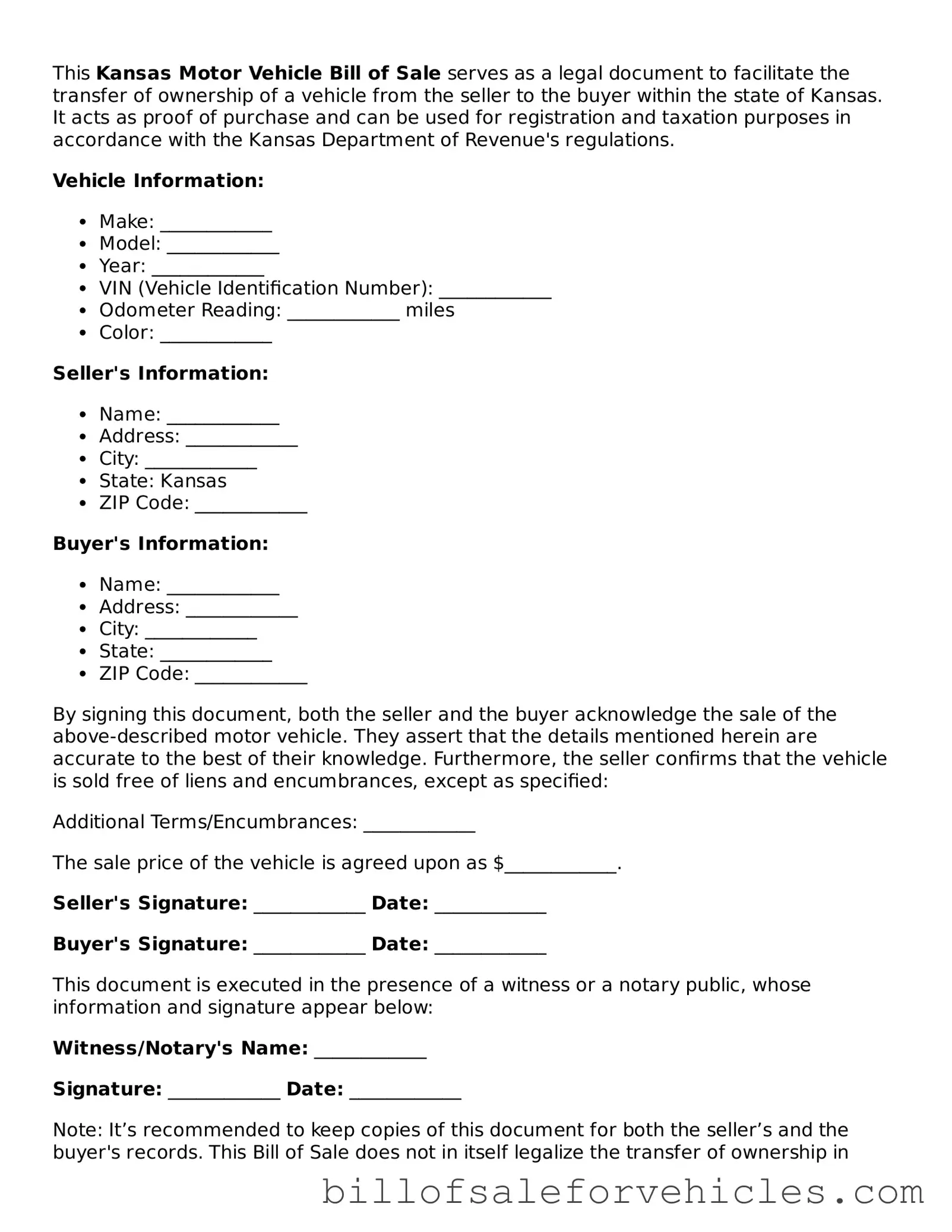What exactly is a Kansas Motor Vehicle Bill of Sale form?
A Kansas Motor Vehicle Bill of Sale form is a legal document that records the sale of a motor vehicle between a seller and a buyer in the state of Kansas. It serves as proof of purchase and includes important information such as the make, model, year, VIN (Vehicle Identification Number), the sale price, and the date of sale. This document plays a crucial role in the transfer of the vehicle's title from the seller to the buyer and is often required for registration and tax purposes.
Is the Kansas Motor Vehicle Bill of Sale form mandatory for vehicle transactions?
Yes, in many cases, the Kansas Motor Vehicle Bill of Sale form is mandatory for vehicle transactions. It is particularly essential when the vehicle's title does not have space for all the necessary details of the sale or when a title is not immediately available. The Bill of Sale provides legal proof of the transaction and can be instrumental in protecting both the buyer's and the seller's interests.
What information is required to fill out the Kansas Motor Vehicle Bill of Sale form?
To complete the Kansas Motor Vehicle Bill of Sale form effectively, specific information is required, including the date of the sale, the full names and addresses of both the seller and the buyer, the vehicle’s make, model, year, VIN, the sale price, and the odometer reading at the time of sale. Both the buyer and the seller must sign the document to validate the sale. It's also recommended to have the signatures notarized for added legal protection.
Do both parties need to sign the Kansas Motor Vehicle Bill of Sale form?
Yes, both the seller and the buyer are required to sign the Kansas Motor Vehicle Bill of Sale form. Their signatures confirm that they agree to the terms of the sale as outlined in the document. Signing the form not only validates the transaction but also serves to protect both parties by providing a legal record of the agreement. For added security and to prevent potential legal disputes, it's advisable to get the document notarized.
After filling out the Kansas Motor Vehicle Bill of Sale form, what are the next steps?
After the Kansas Motor Vehicle Bill of Sale form is filled out and signed by both parties, the next steps involve using the document to transfer the vehicle's title to the new owner. The buyer should take the Bill of Sale, along with any other required documents, to their local Kansas Department of Revenue office to register the vehicle in their name. Registration typically requires paying a fee and submitting to an emissions test or vehicle inspection, depending on the vehicle's age and type. The Bill of Sale is also a crucial document for the buyer to secure insurance for the vehicle.
